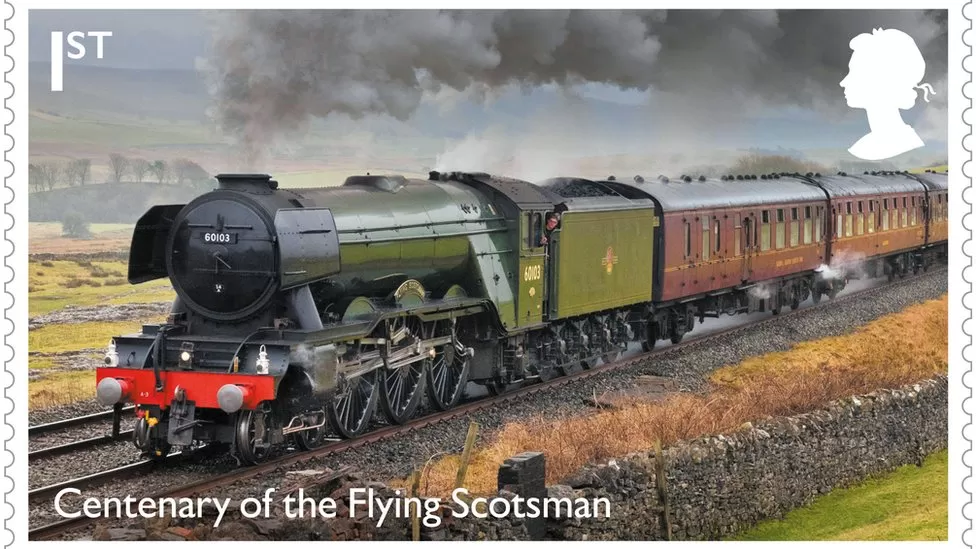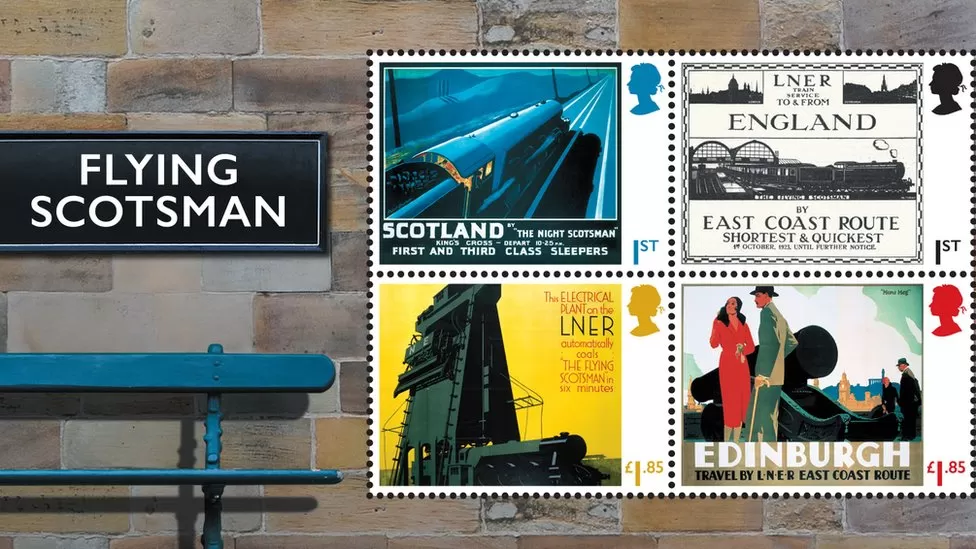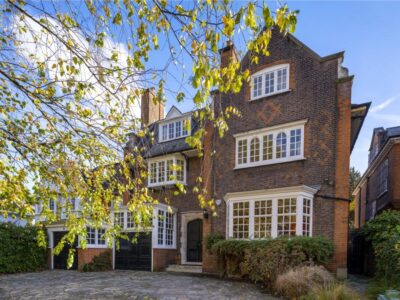The last set of new stamps showing the late Queen’s head are being issued by Royal Mail, featuring the centenary of the Flying Scotsman steam locomotive. This marks the end of an era, with this familiar version of Queen Elizabeth II’s silhouette having appeared on special stamps since 1968. These final stamps of the Elizabethan era can be ordered from Tuesday, and will go on general release next week.

Future commemorative stamps will show a silhouette of King Charles III. Such sets of special stamps have long-term planning schedules, and the Royal Mail has kept to publication plans made before the late Queen’s death last September.
The 12 stamps featuring the Flying Scotsman will be the last to show the Queen’s silhouette, with this design updating an earlier image. These farewell stamps will show the steam locomotive, built in 1923 and running between London and Edinburgh, in settings including North Yorkshire, Northumberland, Berwick-on-Tweed and Victoria Station in London.

The series also shows poster artwork from the 1920s and 1930s, with Royal Mail spokesman David Gold saying the stamps evoke “the golden age of steam travel”. During her reign, the late Queen’s head appeared on hundreds of special issues of stamps, on themes ranging from Concorde, Star Trek and endangered species to Sherlock Holmes. This release marks the end of the Queen appearing on such commemorative stamps, but existing stocks of regular first and second class stamps showing the Queen’s head will be used until they run out.
The new King Charles stamp, to be phased in over the forthcoming months, has already been revealed by the Royal Mail, showing a very minimalist design without a crown. The current silhouette of the late Queen, based on a 1950s image of her in her 20s, was first used in 1968 on stamps celebrating British bridges, including what was then a modern-looking M4 motorway viaduct.

There was politics in the background too, with the Postal Museum noting that a decision to include a stamp of the Menai Bridge rather than Tower Bridge was out of sensitivity to “Welsh aspirations”. In 1968, a first-class stamp cost 5d, about two pence in decimal money. The cost is now 95 pence.
![]()





